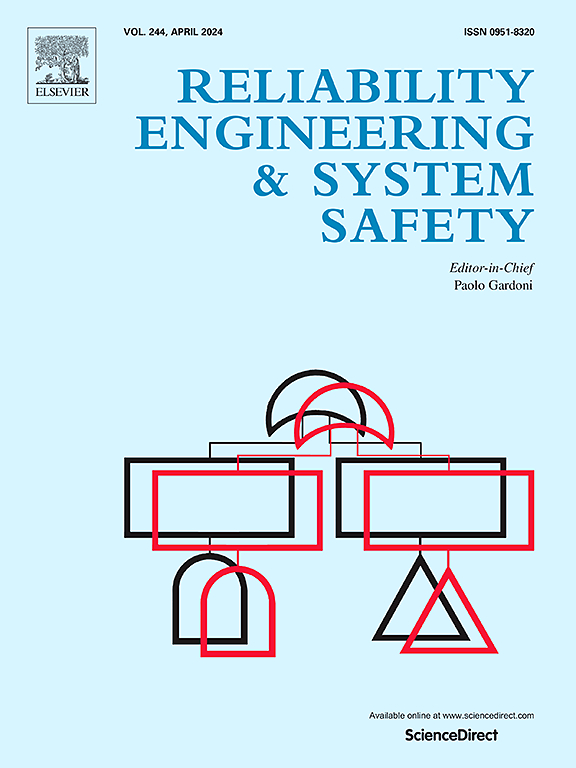IF 9.4
1区 工程技术
Q1 ENGINEERING, INDUSTRIAL
引用次数: 0
摘要
核电站电气柜火灾对反应堆安全构成重大威胁。虽然已有大量研究对电柜火灾进行了调查,但高温烟层诱发的风险实时演变尚未得到足够重视。因此,本研究提出了双向时空卷积网络(BiTCN)和反转卷积神经网络(TCNN)相结合的双重人工智能框架,以提前预测温度场。数据库由火灾动力学模拟器(FDS)构建,具有不同的燃烧器高度、热释放率和通风条件。记录天花板下的温度和温度场。使用热电偶数据对 BiTCN 进行训练,以便在 60 秒的准备时间内预测天花板温度。与其他方法相比,BiTCN 在准确性和计算效率方面更具优势。TCNN 以 BiTCN 的输出为输入,以 FDS 温度切片结果为输出标签,推断二维温度场的实时变化。其 R2 值达到 0.973。虽然存在一些差异,但结果表明,在捕捉温度场的空间和时间动态方面,该方法具有很强的预测能力和可靠性。这项工作展示了利用人工智能(AI)预测机柜火灾动态演变的潜力,是在核安全领域应用人工智能的一次重要探索。本文章由计算机程序翻译,如有差异,请以英文原文为准。
Assist in real-time risk evaluation induced by electrical cabinet fires in nuclear power plants: A dual AI framework employing BiTCN and TCNN
Electrical cabinet fires in nuclear power plants pose significant threats to reactor safety. While numerous studies have investigated cabinet fires, risk real-time evolution induced by high-temperature smoke layer has not received sufficient attention. Consequently, this study proposes a dual AI framework, integrating the Bidirectional Temporal Convolutional Network (BiTCN) and Transposed Convolutional Neural Network (TCNN), to predict temperature field in advance. Database is constructed by Fire Dynamics Simulator (FDS), featuring various burner heights, heat release rates, and ventilation conditions. Temperature beneath ceiling and temperature field are recorded. Thermocouple data is used to train BiTCN for forecasting ceiling temperature with a lead time of 60 s. The trained BiTCN model achieved an exceptional R2 value exceeding 0.999. Compared to other methods, BiTCN has advantages in accuracy and computational efficiency. The TCNN takes output from BiTCN as input and FDS temperature slice results as output labels to deduce real-time changes in two-dimensional temperature field. It achieves an R2 value of 0.973. Although some discrepancies exist, results indicate strong predictive capability and reliability in capturing spatial and temporal dynamics of temperature field. This work demonstrates potential of using Artificial Intelligence (AI) to predict dynamic evolution of cabinet fires and represents a significant exploration of applying AI in nuclear safety.
求助全文
通过发布文献求助,成功后即可免费获取论文全文。
去求助
来源期刊

Reliability Engineering & System Safety
管理科学-工程:工业
CiteScore
15.20
自引率
39.50%
发文量
621
审稿时长
67 days
期刊介绍:
Elsevier publishes Reliability Engineering & System Safety in association with the European Safety and Reliability Association and the Safety Engineering and Risk Analysis Division. The international journal is devoted to developing and applying methods to enhance the safety and reliability of complex technological systems, like nuclear power plants, chemical plants, hazardous waste facilities, space systems, offshore and maritime systems, transportation systems, constructed infrastructure, and manufacturing plants. The journal normally publishes only articles that involve the analysis of substantive problems related to the reliability of complex systems or present techniques and/or theoretical results that have a discernable relationship to the solution of such problems. An important aim is to balance academic material and practical applications.
 求助内容:
求助内容: 应助结果提醒方式:
应助结果提醒方式:


